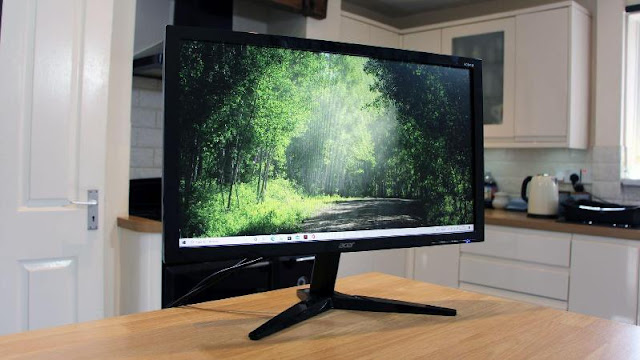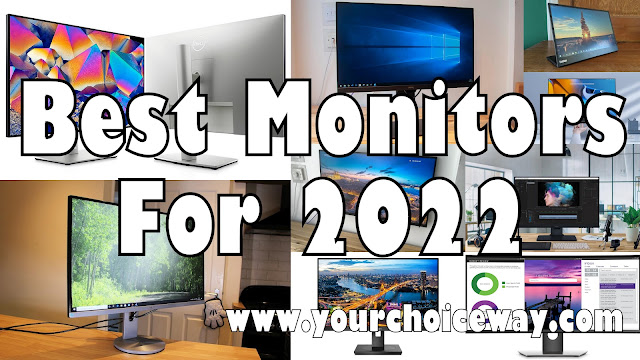BenQ’s new EL2780U is a 28in 4K gaming monitor built using traditional TN display technology. Where it parts from the norm is that along with a 1ms fresh it is also HDR capable, a feature usually associated with IPS and AHVA monitors.
Should I Buy The BenQ EL2780U?
Our Verdict
- As an affordable 4K screen with a high refresh rate, the EL2780U is good enough, even if the HDR part of this equation doesn’t entirely add up. If you’ve got a GPU that can handle the resolution, then the BenQ EL2780U is a solid purchase.
Price When Reviewed
- $449
Over the past year, we’ve seen some gaming screens that flaunt the accepted models for their respective display technology. Specifically, IPS and AHVA screens that are typically good at colours and viewing angles, are suddenly able to deliver the legendary refresh rates of TN panels.
That wasn’t good news for makers of TN panels, as their continued existence was dependent on being the weapon of choice for those that want the least decoding lag and highest refresh rate.
The BenQ EL2780U, therefore, represents a fight back for TN technology, as it has a panel that has the classic speed advantages TN, but is also 4K resolution and HDR 10 compliant.
Is it too good to be true, and has TN now addressed one of its major flaws; colour representation?
Price
The quoted MSRP is £329 in the UK, making the BenQ EL2780U one of the cheaper 4K gaming screens that you can buy, but not the very cheapest. You can buy it from Amazon UK.
It's currently available on Amazon US for $499.
AOC’s U2879VF IPS panel is around £10 less, although it doesn’t offer HDR or DisplayPort input. Asus has a very similar spec TN design, the VP28UQG, that costs about the same, doesn’t have HDR and only a DisplayPort 1.2 port.
Samsung also makes a very similar design using TN technology, but the U28E850R is close to £380 and doesn’t decode HDR 10 signals. It is possible to find cheaper 4K gaming panels, like the LG 24UD58, but that’s a 23.8in display and a colour gamut of just 72 percent NTSC.
For this precise feature set, the BenQ EL2780U is difficult to beat for the price asked.
Most gamers would like 28in or 32in screens if they could afford them, and the BenQ EL2780U is pitched perfectly for those that want 4K in a screen size where you can irrefutably see the difference from 1440p or 1080p panels.
At more than 70cm corner to corner, you can sit back from this screen and give your eyes less work to do focusing on a nearby object. The design is minimalist, often with hints that BenQ wanted to make this screen as affordable as possible.
Therefore, the support is a very basic one that only offers tilt functionality. VESA 100 holes are present for those that want more ergonomic adjustments and have a suitable support arm. Bordering is greatest at the bottom, but even around the sides and top it is at least 2cm between the physical edge of the frame and the beginning of the presented display.
Along the rear underside at the inputs, and they’re all easy to reach because there isn’t any cable management whatsoever. The depth of the panel is greater than we would expect, being at least 6cm at its thickest point. But, that volume was well used, as there isn’t any annoying power block, and BenQ also had room to install a pair of 2-watt speakers inside.
One retro feature is that unlike many recent screens BenQ went with the menu system that relies on six buttons on the underside of the right-hand side of the frame. Compared with recent designs that use a little joystick, this methodology seems clumsy and inefficient.
Also, there is an extra button on the front right fascia that provides a status report on HDR, revealing if the mode is active. It can be used to force HDR mode and B.I.+ (Brightness Intelligence Plus Technology) modes on, even in games that don’t support HDR. The output of a standard video card is processed by the screen to expand its dynamic range through emulation.
B.I.+ is a capability that BenQ introduced last year on some of their Ultra Premium Entertainment Monitor range. It uses a light sensor mounted on the panel to detect ambient brightness and colour temperature levels. In real-time it then adjusts the display output to protect viewers' eyesight and deliver the ideal picture quality for that environment.
As part of the B.I.+ strategy, it can also offer flicker-free and low blue light modes, if you’re concerned about the impact of prolonged viewing.
But, the headline feature here is that this is a 10-bit deep panel, allowing for much better colour representation and HDR, and it also has a natural resolution of 3840x2160. Early 4K screens suffered unacceptably low 30Hz refresh rates, but this design supports 60Hz mode and variable sync.
The inputs include two HDMI 2.0 ports and a single DisplayPort 1.4. To achieve 4K resolution, you’ll need a video card that can drive those ports at that specification.
One curiosity is that while this display does support adjustable sync through AMD’s FreeSync, it isn’t FreeSync version 2 compliant. Because of that, it doesn’t support true HDR while using FreeSync, unfortunately.
Performance
Traditionally the weakness of TN panels is the colour representation and limited viewing angles, and it is worth mentioning that BenQ hasn’t done anything about the latter. Viewing angles are only a problem if your gaming skills as so good that they attract keen observers who like to sit by your side.
Regarding the colours, this is one of the most colourful TN panels we’ve seen, but it still doesn’t deliver the gamut range that a good IPS or AHVA solution can.
For that reason the BenQ EL2780U won’t become a firm favourite of photographers or professional designers, it’s strictly a gaming screen. Using the Datacolor’s Spyder5 calibrator, we determined that while sRGB coverage is decent at 96%, AdobeRGB is just 74% represented. So the BenQ EL2780U does lots of colours, just not the ones that most designers desire.
Tone response testing revealed that the default Gamma is 2.0, although the menu gives the Gamma values five arbitrary settings rather than actual Gamma numbers. Brightness was above the BenQ quoted 300 cd/m2, at 335.1 cd/m2, though that is still on the low side for a display that’s offering HDR 10.
One snag with calibrating this monitor is that you’re encouraged to lower the brightness even more (200 cd/m2), undermining the HDR feature even more. For many users getting HDR to work at all on a PC is a challenge, since Microsoft made changes to Windows 10 to entirely undo the efforts of AMD and Nvidia with their HDR compliant drivers.
Activating HDR mode in Windows 10 makes the desktop practically unusable on every HDR monitor we’ve tried. That fault was first introduced in the Creative update, and Microsoft appears in no hurry to fix it.
To use HDR on those PC titles that support it, you must suffer weird interface colours, in the knowledge that once you enter the game, it will look much nicer. For those wishing to put the effort in to get HDR to work on the PC, the results can be very pleasing. The saturation of colours and the details in dark scenes are striking.
However, the colours are not as punchy as we’ve seen on other IPS HDR screens, and that is probably down to the maximum brightness that’s available from the backlight. What this screen does best is the 1ms high refresh at 4K resolution without any noticeable decoding lag. And, with the 60Hz refresh at 4K make it a reasonable experience for desktop work.
There is some frame shadowing, and the centre is a good amount brighter than the edges, but not so much that it becomes a distraction.
Snags To 4K Gaming
There are problems that the EL2780U inherits that BenQ can’t do anything about, but we need to outline to any prospective buyers. Driving a game in 4K with high detail settings is the goal for my avid gamers, but having a monitor that can present those images is only part of that equation.
The computing power to generate more than 60 fps at this resolution on most PC titles is significant, requiring a high-end GPU to get the fully playable experience. However, the cost of one of these has skyrocketed, as a result of the unforeseen consequences of crypto-currencies, where GPUs are being used to mine Bitcoin, for example.
With the retail cost of a 1080Ti approaching £1000 ($1,200) or higher, and even mid-range cards being difficult to source, the implications for PC gamers are becoming serious.
Compared with the 1080Ti or similar video card needed to drive it effectively in a native resolution with a decent detail level, the cost of the EL2780U now pales in comparison. BenQ isn’t responsible for this scenario, though it makes justifying the move up to 4K on the PC a financial impossibility for many gamers.
As such, this monitor might be better utilised by PS4 and Xbox One S owners than by the PC fraternity, until the GPU market regains some sanity and HDR becomes better supported.
Specs
- Size: Wide Screen 27.9"(70.86 cm)
- Natural Resolution: 3840x2160 (4K)
- Panel: TN Technology
- Aspect Ratio: 16:9
- Response Time: 1ms (GtG)
- Viewing Angle (CR?10) : 170°(H)/160°(V)
- Maximum Refresh: 76Hz
- AMD FreeSync: Yes
- Ports: 2x HDMI 2.0, 1x DisplayPort 1.4, 3.5mm Mini-Jack for Headphones
- Speakers: 2x 2W
- Brightness: 300 cd/m2
- Static Contrast: 1,000:1
- Smart Contrast Ratio (HDCR): 12M:1























0 comments:
Post a Comment